Phone:
(+65)8319-0742
Safety should be the top priority in any construction site, especially when working at height. With approximately 4,500 injuries each year related to scaffolding incidents, it is essential to take proactive measures to ensure a hazard-free working environment that complies with OSHA regulations.
Key Takeaways:
- Implementing scaffolding safety measures is crucial for minimizing the risk of accidents at construction sites.
- Complying with OSHA regulations and guidelines enhances the safety and well-being of workers.
- Proper use of personal protective equipment (PPE) protects workers from potential hazards.
- Regular inspections, adherence to scaffolding design limits, and stable scaffold assembly practices are critical for maintaining a secure work site.
- Weather conditions should be closely monitored, and staff should be trained on appropriate safety measures during adverse weather.
Importance of Personal Protective Equipment (PPE) in Scaffolding Safety
When it comes to working on scaffolds, personal protective equipment (PPE) plays a critical role in ensuring the safety of workers. By wearing the appropriate PPE, construction professionals can significantly reduce the risk of accidents and injuries. Let’s explore the essential PPE items that are essential for scaffolding safety:
Hard Hat
One of the most crucial pieces of PPE for scaffold workers is a hard hat. Hard hats protect against falling objects, such as construction materials or tools, which can cause severe head injuries. It is vital to wear a properly fitted hard hat that meets industry standards and complies with OSHA regulations.
Non-Slip Footgear
Working at height on scaffolds requires stability and a firm grip on the ground. Non-slip footgear, such as safety boots with slip-resistant soles, provides the necessary traction to prevent slips, trips, and falls. Proper footgear is essential for maintaining balance and stability, reducing the risk of accidents.
Fall Arrest Equipment
As falls from height are one of the most significant hazards in construction, fall arrest equipment is crucial for scaffolding safety. Fall arrest systems, including harnesses, lanyards, and anchor points, prevent workers from falling off the scaffold. It is essential to use reliable and properly maintained fall arrest equipment to mitigate the risk of severe injuries or fatalities.
Hand-Protecting Gloves
When working on scaffolds, hand-protecting gloves are essential for maintaining a firm grip and preventing hand injuries. These gloves provide a secure hold on tools and equipment, reducing the likelihood of tool drops that can cause severe harm to workers below. Choosing gloves with excellent dexterity and durability is paramount for optimal safety.
Tool-Tether Lanyards
Tools dropped from scaffolds have the potential to cause serious injuries to workers and bystanders. To prevent tool drops, tool-tether lanyards are used to secure tools to the worker’s person or scaffold. By tethering tools, workers eliminate the risk of tools falling and enhance overall safety on the scaffold.
By ensuring that workers are equipped with the proper personal protective equipment, including hard hats, non-slip footgear, fall arrest equipment, hand-protecting gloves, and tool-tether lanyards, construction companies can create a safer work environment on scaffolds. These measures significantly reduce the risk of accidents, injuries, and potential fatalities, promoting the overall well-being and security of the workforce.
Load-Bearing Capacities and Understanding Scaffold Design Limits
When it comes to scaffolding safety, understanding load-bearing capacities and scaffold design limits is crucial. Every scaffold structure has specific load-bearing capacities, and exceeding these limits can lead to collapse or failure, putting both workers and the construction site at risk.
So, what exactly are load-bearing capacities? These capacities refer to the maximum weight that a scaffold can safely support. It is essential to know the design capacity of the scaffold you are working with and ensure that you do not place excessive loads on the platforms.
Scaffolding components are designed with a 4 to 1 safety factor. This means that the scaffold’s actual load-bearing capacity is four times greater than the maximum intended load it is expected to carry. This safety factor provides a significant capacity safety cushion, ensuring that the scaffold remains stable and secure even when subjected to unexpected or dynamic loads.
However, it is important not to push the limits of the scaffold’s load-bearing capacity. Exceeding the recommended weight limits can compromise the scaffold’s stability, leading to serious accidents and injuries. Always adhere to the manufacturer’s guidelines and consult with a qualified engineer or scaffold designer when in doubt about the scaffold’s load-bearing capabilities.
By understanding and respecting load-bearing capacities and scaffold design limits, you can ensure a safe and secure work environment for everyone involved in the construction project.
Stay tuned for the next section, where we will discuss the importance of compliance with scaffolding regulations and standards, ensuring a hazard-free construction environment.
Compliance with Scaffolding Regulations and Standards
When it comes to scaffolding, compliance with regulations and standards is of utmost importance. Different industries and customer sites may have specific requirements, making it crucial for companies to thoroughly research and adhere to the relevant scaffolding regulations.
One of the primary authorities in scaffolding safety is the Occupational Safety and Health Administration (OSHA). OSHA sets regulations and guidelines to ensure safe work practices and minimize hazards on construction sites. Complying with OSHA regulations is essential for maintaining a secure work environment.
Aside from OSHA, there are industry standards that companies must also follow. These standards are developed by professional organizations and provide guidelines on safe scaffolding practices that go beyond minimum OSHA requirements. Adhering to industry standards demonstrates a commitment to excellence and a dedication to ensuring the safety of workers.
Furthermore, customer site requirements may vary depending on the specific project or location. Some customers may have additional safety measures or specifications concerning scaffolding. It is essential to understand and meet these requirements to ensure smooth operations and avoid regulatory complications.
Compliance with regulations and standards necessitates regular inspections and assessments carried out by a Competent Person. This person has the knowledge and expertise to identify potential hazards, assess scaffolding integrity, and make recommendations for improvement. Regular inspections play a crucial role in maintaining a safe work environment and preventing accidents.
Worker training is also a vital aspect of compliance. All workers involved in scaffolding operations should receive comprehensive training on safe work practices, hazard identification, and emergency procedures. Properly trained workers are better equipped to minimize risks and respond effectively to potential incidents.
Quote:
“Compliance with scaffolding regulations is not optionalâit is a necessary and ethical responsibility that ensures the safety and well-being of workers in the construction industry.”
âSamantha Rodriguez, Safety Compliance Specialist at ConstructionSafe Inc.
In summary, complying with scaffolding regulations, industry standards, customer site requirements, and prioritizing worker training are essential for maintaining a secure and hazard-free work environment. By meeting these requirements, construction companies demonstrate their commitment to safety, protect their workers, and minimize the risks associated with scaffolding operations.
Common Scaffolding Regulations and Standards
| Regulation/Standard | Overview |
|---|---|
| OSHA Regulations | Set by the Occupational Safety and Health Administration to ensure safe work practices and minimize hazards on construction sites. |
| ANSI/ASSE A10.8 | American National Standard for Scaffolding Safety Requirements, covering design, construction, and use of scaffolds. |
| CSA S269.2 | Canadian Standard Association’s requirements for access scaffolding. |
| BS EN 12811-1 | European standard for temporary works equipment, including scaffolding. |
Pre-Construction Scaffold Inspection and Material Checks
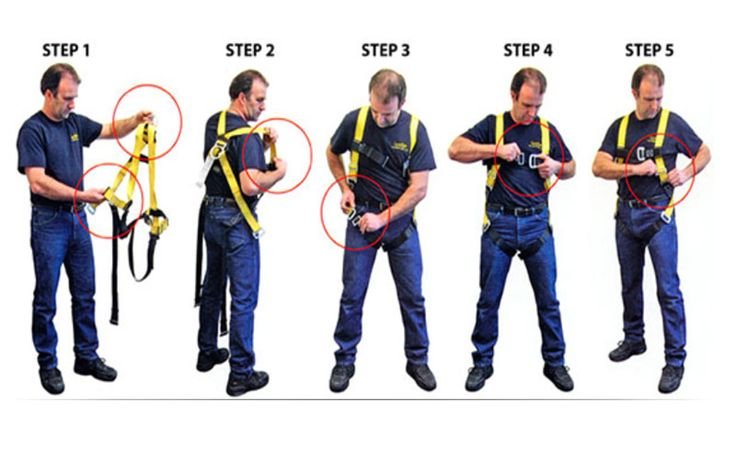
Before setting up scaffolds, it is crucial to conduct a thorough inspection of all materials to ensure their structural integrity. This step is essential for creating a safe work environment and preventing accidents. Mismatching components, in particular, can pose significant hazards and compromise the scaffold’s stability. Therefore, it is vital to check for any discrepancies and ensure that all components are compatible and properly fit.
To maintain a high standard of scaffold safety, inspectors should pay close attention to the following:
- Scaffold Inspection: Examine each scaffold component for defects, such as cracks, bends, or signs of deterioration. Ensure that all connections are secure and there are no missing or damaged parts.
- Material Inspection: Check the quality and strength of the scaffold materials, such as steel or aluminum tubes, couplers, and boards. Look for any signs of corrosion, warping, or other damage that could compromise their integrity.
- Structural Integrity: Assess the overall stability and load-bearing capacity of the scaffold. Ensure that it can withstand the intended loads without any risk of collapse or failure.
- Mismatching Components: Verify that all scaffold components match and are compatible with each other. Using mismatched or incompatible parts can weaken the scaffold’s structure and compromise its stability.
By conducting pre-construction scaffold inspections and material checks, construction professionals can identify and rectify any issues before workers access the scaffold. This proactive approach ensures that the scaffold is safe for use, minimizing the risk of accidents and injuries.
Proper Scaffold Assembly and Building Practices
When it comes to scaffolding safety, proper assembly and building practices are of utmost importance. Following the manufacturer’s instructions is essential to ensure the stability and safety of the scaffold. This includes using the correct bracing, fasteners, and anchor requirements.
Shortcuts and improvisation may seem tempting to save time or effort, but they can compromise the structural integrity of the scaffold and increase the risk of accidents. It is crucial to resist the temptation and adhere to the approved procedures and guidelines.
Bracing and Fasteners
Bracing is a critical component of scaffold assembly as it provides lateral stability. The manufacturer’s instructions will specify the required bracing pattern and positioning. It is vital to follow these instructions meticulously to guarantee a stable and secure structure.
Fasteners, such as bolts and clamps, play a significant role in holding the scaffold components together. The manufacturer’s instructions will provide guidance on the appropriate types and sizes of fasteners to use. Regular inspections should also be conducted to ensure that all fasteners are securely tightened.
Anchoring
Proper anchoring is essential to prevent scaffolds from tipping or collapsing. The manufacturer’s instructions will provide specific guidelines on anchoring requirements based on the scaffold type and height.
For example, scaffolds erected on soft or sloped surfaces may require additional measures to ensure stability. This can include using base plates, screw jacks, or stabilizer brackets. It is crucial to follow the manufacturer’s recommendations and consult a qualified engineer, if necessary, to ensure the scaffold is securely anchored.
“Taking shortcuts or improvising designs can compromise the scaffold’s structural integrity and increase the risk of accidents.”
Remember, improvisation or taking shortcuts may seem convenient, but it can have serious consequences on scaffold safety. It is always better to prioritize the well-being of workers and adhere to approved assembly practices.
Building Practices: Do's and Don'ts
To ensure a safe working environment, here are some essential do’s and don’ts when it comes to scaffold assembly:
- Do:
- Follow the manufacturer’s instructions explicitly
- Inspect all components for damage or defects before assembly
- Ensure bracing is properly installed according to the recommended pattern
- Use the correct types and sizes of fasteners
- Anchoring correctly based on scaffold requirements
- Don’t:
- Take shortcuts or improvise designs
- Ignore the manufacturer’s instructions
- Use mismatched or damaged components
- Overload the scaffold with excessive weight
- Neglect regular inspections and maintenance
By following these practices, you can ensure the structural integrity of the scaffold and create a secure environment for workers.
Ensuring Scaffold Stability and Secure Base
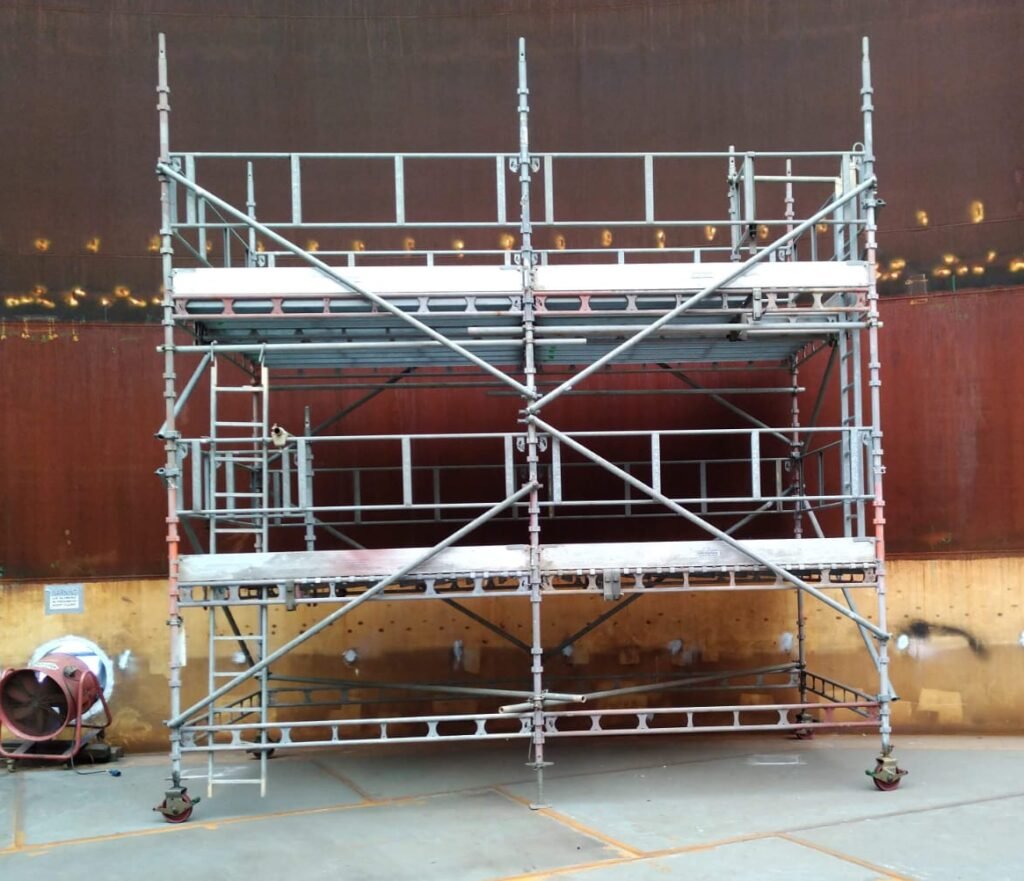
Scaffold stability is of utmost importance to ensure a safe and secure work environment. It starts with establishing a strong and secure base for the scaffold structure. While a level ground surface is ideal, it is not always possible due to the nature of the terrain. Fortunately, scaffolding can be safely built on sloped terrain with the right components and engineering techniques.
When working near power lines, it is crucial to follow specific safety guidelines to avoid any electrical hazards. The power line safety guidelines should be strictly adhered to, and a competent builder person should be on-site to supervise the scaffold erection and ensure compliance with the safety regulations.
The rigid installation of components is paramount for maintaining scaffold stability. All components must be securely fastened and properly interlocked, leaving no room for movement or dislodgment. This includes ensuring the correct placement and connection of scaffolding frames, cross braces, planks, and guardrails.
By following these guidelines, construction professionals can ensure that scaffolds are stable and secure, minimizing the risk of accidents and injuries.
Key Points:
- Establishing a strong and secure base for scaffolds is essential for stability.
- Scaffolding can be safely built on sloped terrain with the right components.
- Adhering to power line safety guidelines is crucial when working near power lines.
- A competent builder person should supervise scaffold erection and ensure safety compliance.
- Rigidly installing all components is necessary to maintain stability.
Now let’s take a closer look at the different inspections and hazard monitoring required to maintain a safe scaffold in the next section.
Ongoing Inspections and Hazard Monitoring
Regular scaffold inspections are essential for maintaining a safe work environment. These inspections help detect any potential hazards or defects that could compromise the stability and safety of the scaffold. The Competent User Person, assigned by the company, should conduct thorough inspections at the start of each workday to ensure a hazard-free environment.
During scaffold inspections, it is important to follow safety checklists to ensure a comprehensive assessment. These checklists guide the inspector through the necessary steps and help ensure that no critical areas are overlooked. They provide a systematic approach to identifying and addressing potential hazards.
One vital aspect of maintaining a safe scaffold is regular clean-up sessions. Cleanliness on scaffolds plays a significant role in preventing tripping hazards and improving overall safety. By regularly removing debris, tools, and materials, you create a clutter-free work environment that reduces the risk of accidents.
| Scaffold Inspection Checklist | Hazard Detection |
|---|---|
| Review scaffold structure for any damage or defects | Identify loose or damaged components and repair or replace them |
| Check access points, guardrails, and toe boards for stability | Detect any potential fall hazards and implement proper fall protection measures |
| Inspect scaffold platforms for stability and proper installation | Identify any weakened or improperly secured platforms that could collapse |
| Examine the base and foundation for stability and levelness | Ensure a secure and stable foundation to prevent scaffolding tipping or sinking |
| Check for proper tie-ins and bracing | Identify any lack of stability or structural integrity in the scaffold system |
By conducting ongoing scaffold inspections, monitoring hazards, and implementing safety checklists, you can effectively mitigate risks and create a safer work environment. Regular clean-up sessions also contribute to maintaining cleanliness and overall hazard prevention on scaffolds.
Scaffolding Safety during Adverse Weather Conditions
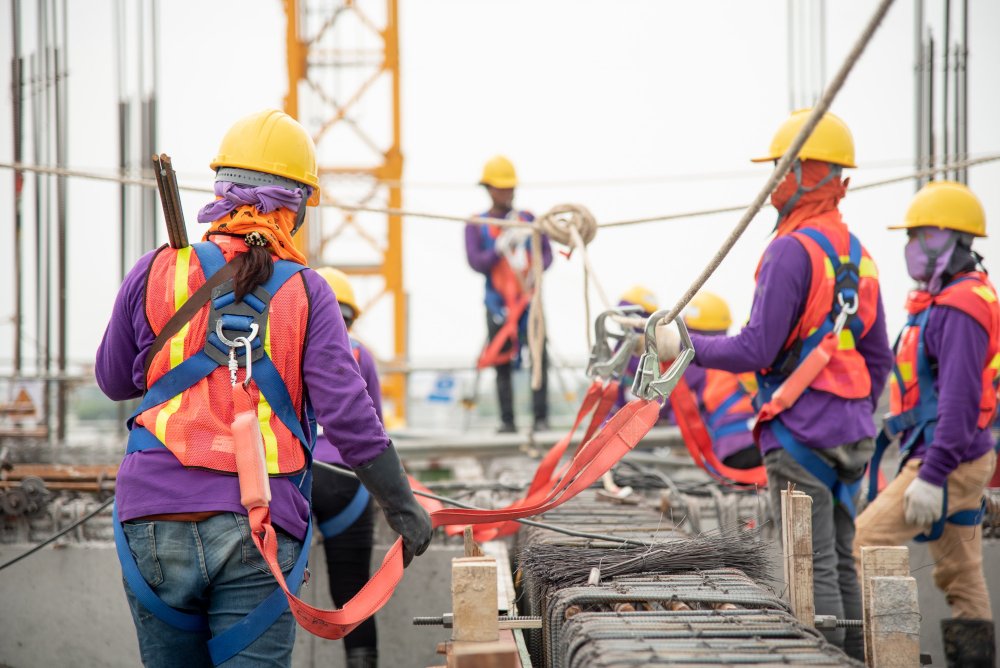
Adverse weather conditions can pose significant risks to scaffold safety. It is crucial to be aware of the potential hazards that high winds, heavy rain, lightning, snow, and ice can present on construction sites. Following OSHA guidelines and implementing storm safety measures are essential for maintaining a hazard-free workplace.
OSHA recommends avoiding the use of scaffolds during severe weather events that could compromise worker safety. It is important to monitor weather forecasts closely and establish protocols for suspending scaffold operations when adverse weather conditions are predicted or present.
Implementing Weather Safety Rules
Enforcing weather safety rules ensures that scaffold work is carried out under safe conditions. Here are some essential guidelines to consider:
- Train workers on weather safety procedures and the risks associated with adverse weather conditions.
- Establish specific wind speed limits for suspending scaffold operations. Consult local weather authorities and adhere to the OSHA-recommended guidelines for wind hazards.
- Provide reliable weather monitoring tools and systems that give real-time updates on weather conditions.
- Assign responsibility to designated personnel to continuously monitor weather forecasts and communicate any necessary suspension of scaffold work.
- Clearly communicate weather-related safety procedures to all workers and ensure their understanding and compliance.
By implementing these weather safety rules, construction companies can minimize the risks associated with adverse weather conditions and create a safer working environment for their employees.
Importance of Licensed and Trained Staff
When it comes to scaffolding safety, having licensed and trained staff is of utmost importance. A fully licensed team will ensure that everyone on the construction site understands and follows proper scaffolding practices, reducing the risk of accidents and creating a safer work environment. Obtaining a license requires extensive education, training, and hands-on experience, guaranteeing the necessary competency to carry out safe scaffolding practices.
Qualified training plays a crucial role in equipping staff with the knowledge and skills needed to work with scaffolding efficiently and safely. It covers essential aspects such as scaffold assembly, inspection, load-bearing capacities, and adherence to industry standards and regulations. Training programs also emphasize the importance of hazard identification and prevention, ensuring that personnel are aware of potential risks and know how to mitigate them effectively.
By prioritizing licensed staff and providing them with qualified training, construction companies can promote safe scaffolding practices that significantly reduce the occurrence of accidents and injuries. This commitment to safety not only protects the workers but also enhances overall productivity and project success.
Benefits of Licensed and Trained Staff:
- Enhanced Safety: Licensed staff are well-versed in safe scaffolding practices, minimizing the risk of accidents and creating a secure work environment.
- Compliance: Licensed staff ensure compliance with industry regulations and standards, avoiding costly penalties and legal issues.
- Efficiency: Trained personnel can assemble, inspect, and maintain scaffolds efficiently, reducing project downtime and improving productivity.
- Reduced Liability: With licensed staff, construction companies mitigate their liability by demonstrating a commitment to safety and compliance.
- Confidence: Clients and stakeholders gain confidence in the construction company’s ability to prioritize safety when they see licensed staff on site.
“Investing in licensed and trained staff is an investment in the well-being of your workers and the success of your construction projects. It shows that safety is a priority and ensures that each member of the team understands and applies the necessary precautions to work with scaffolding safely.”– John Thompson, Construction Safety Expert
Licensing and Training Requirements
The process of becoming a licensed scaffolding professional typically involves completing a comprehensive training program that covers both theoretical knowledge and practical skills. Depending on the jurisdiction, this may include obtaining specific certifications and passing examinations to demonstrate competency in safe scaffolding practices.
Training programs are designed to equip individuals with an in-depth understanding of scaffold design, construction, inspection, and maintenance. They cover topics such as load-bearing capacities, structural integrity, fall protection, hazard identification, and emergency response procedures. This training not only ensures the safety of workers but also contributes to the overall success of construction projects.
Employers should prioritize ongoing training and stay up-to-date with the latest standards and regulations to maintain a competent and knowledgeable workforce. Regular refreshers and updates will keep staff aware of any changes and advancements in safe scaffolding practices, enabling them to adapt to new requirements and technologies.
Climbing Practices and Scaffolding Tags
When working on scaffolds, it is crucial to follow safe climbing practices to minimize the risk of accidents and injuries. Workers should always maintain three points of contact with the scaffold when climbing, meaning they have both feet and at least one hand firmly grasping the scaffold at all times. This ensures stability and reduces the chances of slipping or losing balance.
To further enhance safety, scaffold tags are used to identify the safety status of the scaffold. These tags come in three different colors:
- Green tags: Green tags indicate that the scaffold is safe for use. This means it has been inspected, meets the necessary safety requirements, and is in good working condition.
- Yellow tags: Yellow tags indicate that modifications or special precautions are necessary before using the scaffold. This could include temporary barriers, additional bracing, or other safety measures to mitigate specific risks.
- Red tags: Red tags indicate that the scaffold is unsafe and should not be used. This could be due to damage, structural issues, or other hazards that pose a significant risk to workers.
By adhering to proper climbing practices and paying attention to scaffold tags, workers can ensure their safety and create a secure work environment on scaffolds.
| Scaffold Tags | Description |
|---|---|
| Green Tags | Indicates that the scaffold is safe for use |
| Yellow Tags | Indicates the need for modifications or special precautions |
| Red Tags | Indicates that the scaffold is unsafe and should not be used |
Conclusion
Ensuring scaffolding safety is of paramount importance for maintaining secure work sites and complying with OSHA regulations. By implementing the provided safety tips and guidelines, companies can significantly reduce the risks of scaffolding-related accidents and create a hazard-free construction environment.
Adhering to proper personal protective equipment (PPE) usage, understanding load-bearing capacities, and complying with scaffolding regulations are essential steps in fostering a safe work environment. Thorough pre-construction inspections, proper scaffold assembly practices, and ensuring scaffold stability further contribute to worker safety.
Ongoing inspections, hazard monitoring, and maintaining cleanliness on scaffolds help identify and eliminate potential risks. Additionally, adhering to safety protocols during adverse weather conditions and employing licensed and trained staff enhance overall safety performance.
Creating a secure work site requires a collective effort. By prioritizing scaffolding safety and following the provided guidelines, companies can protect the well-being of their workers and establish a hazard-free construction environment.
Frequently Asked Questions
Why is personal protective equipment (PPE) important in scaffolding safety?
Personal protective equipment, such as hard hats, non-slip footgear, fall arrest equipment, hand-protecting gloves, and tool-tether lanyards, is crucial in scaffolding safety to protect workers from falling objects, improve stability, prevent tool drops, and enhance overall safety.
What are the load-bearing capacities and design limits of scaffolds?
Scaffolds have specific load-bearing capacities, and it is important to understand the design capacity of the scaffold. Scaffolding components are designed with a 4 to 1 safety factor, providing a significant safety cushion. Exceeding these limits can lead to scaffold collapse or failure.
How important is it to comply with scaffolding regulations and standards?
Compliance with scaffolding regulations, such as OSHA requirements, industry standards, and customer site requirements, is essential for ensuring a secure work site and a hazard-free construction environment. Worker training is also necessary to minimize risks and hazards associated with scaffolding.
Why is pre-construction scaffold inspection and material checks important?
Thorough inspection of scaffold materials before construction is crucial for ensuring their structural integrity. Mismatching components can pose hazards and compromise scaffold stability. Checking for defects and damage is necessary to maintain a safe work environment.
What is the importance of proper scaffold assembly and building practices?
Following the manufacturer’s instructions for scaffold assembly is essential for ensuring stability and safety. This includes using the correct bracing, fasteners, and anchor requirements. Taking shortcuts or improvising designs can compromise the scaffold’s structural integrity and increase the risk of accidents.
How can scaffold stability and a secure base be ensured?
Scaffold stability starts with ensuring a secure base. While a level ground surface is ideal, scaffolding can also be built on sloped terrain with the right components. When working near power lines, specific safety guidelines apply, and a competent builder person should supervise the scaffold erection. Rigidly installing all components is crucial for maintaining stability.
How often should scaffold inspections be conducted?
Regular scaffold inspections should be conducted to detect any hazards or defects. Competent User Persons should carry out inspections at the start of each workday to ensure a hazard-free environment. Safety checklists can aid in comprehensive inspections. Regular clean-up sessions and maintaining cleanliness on scaffolds are essential for preventing tripping hazards and maintaining a safe work environment.
What precautions should be taken during adverse weather conditions?
Adverse weather conditions, such as high winds, heavy rain, lightning, snow, and ice, pose significant risks to scaffold safety. OSHA guidelines recommend avoiding the use of scaffolds during severe weather events. Monitoring forecasts and enforcing weather safety rules are crucial for maintaining a hazard-free workplace.
Why is it important to hire licensed and trained staff for scaffolding work?
Using fully licensed staff and contractors ensures that everyone on the construction site understands and follows proper scaffolding practices. Obtaining a license requires education, training, and hands-on experience, ensuring competency and safe work practices.
What are the best practices for climbing on scaffolds?
Workers should maintain three points of contact at all times when climbing on scaffolds. Scaffold tags help identify the safety status of the scaffold, with green tags indicating it is safe for use, yellow tags indicating modifications or special precautions, and red tags indicating the scaffold is unsafe.
What is the importance of scaffolding safety?
Ensuring scaffolding safety is crucial for maintaining secure work sites and complying with OSHA regulations. Following the provided safety tips and guidelines can greatly reduce the risks of scaffolding-related accidents and create a hazard-free construction environment.


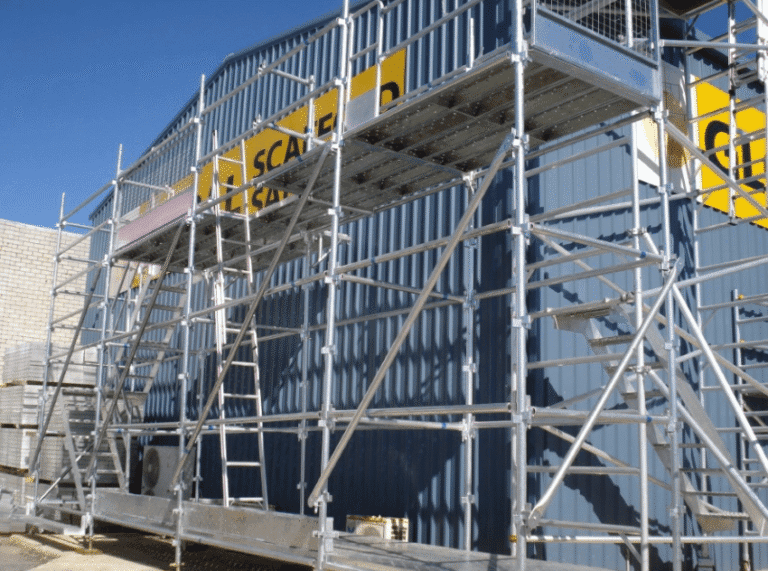


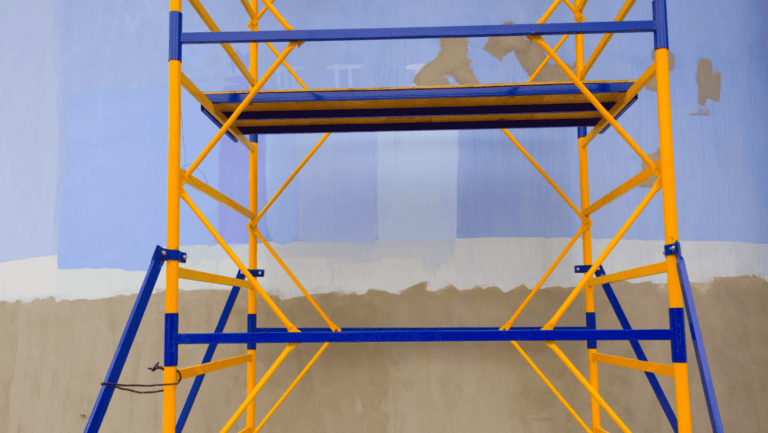


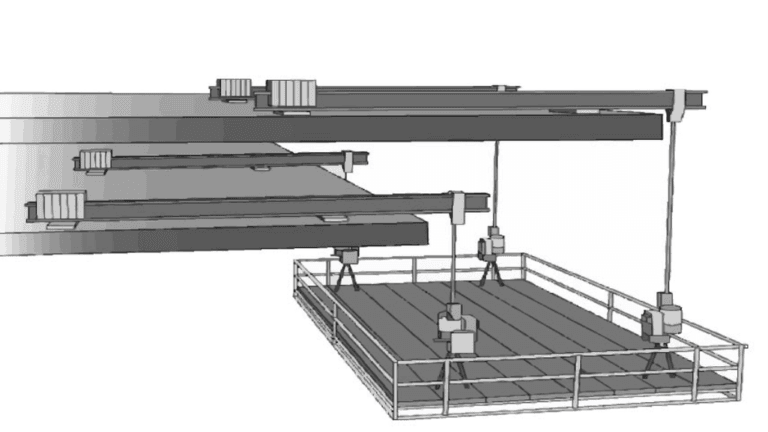

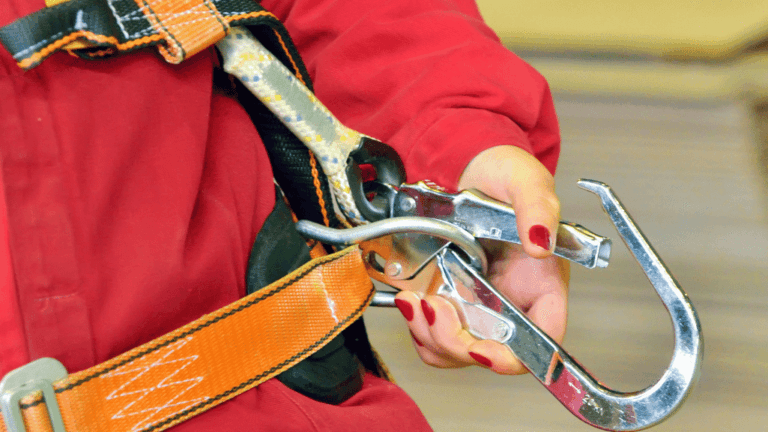
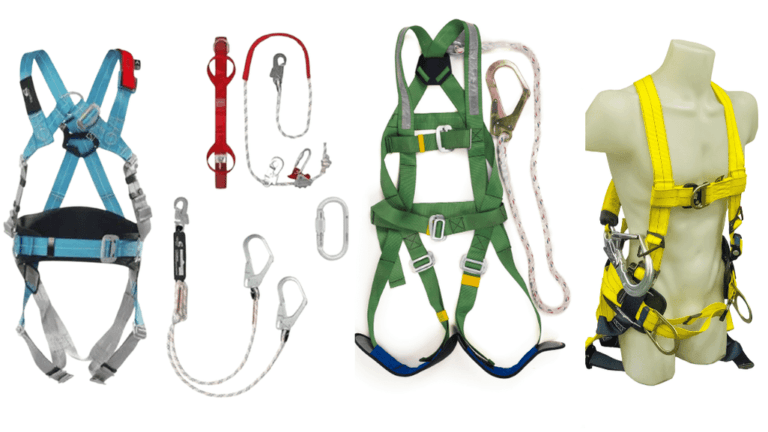
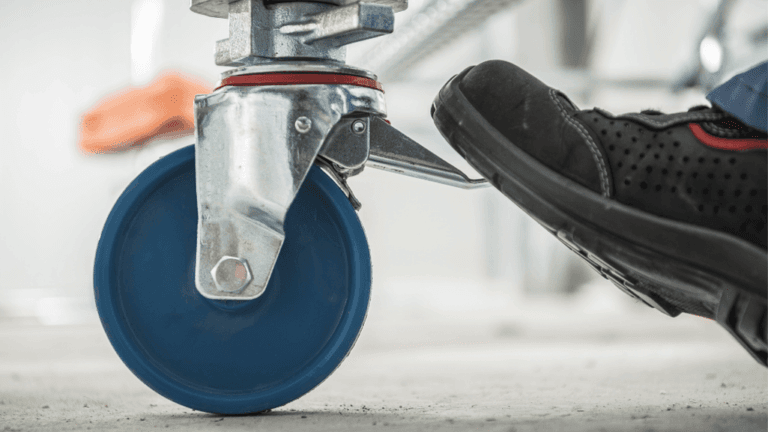





[…] Scaffolding Safety Tips for Secure Work Sites | Expert Guide Safety should be the top priority in any construction site, especially when working at height. With approximately… No posts found Next Post Scaffolding Safety Tips for Secure Work Sites | Expert Guide […]
[…] Scaffolding Safety Tips for Secure Work Sites | Expert Guide Safety should be the top priority in any construction site, especially when working at height. With approximately… OSHA Scaffolding Requirements Guide 2024 | Ensure Construction Safety OSHA (Occupational Safety and Health Administration) has established strict regulations to ensure the… No posts found […]